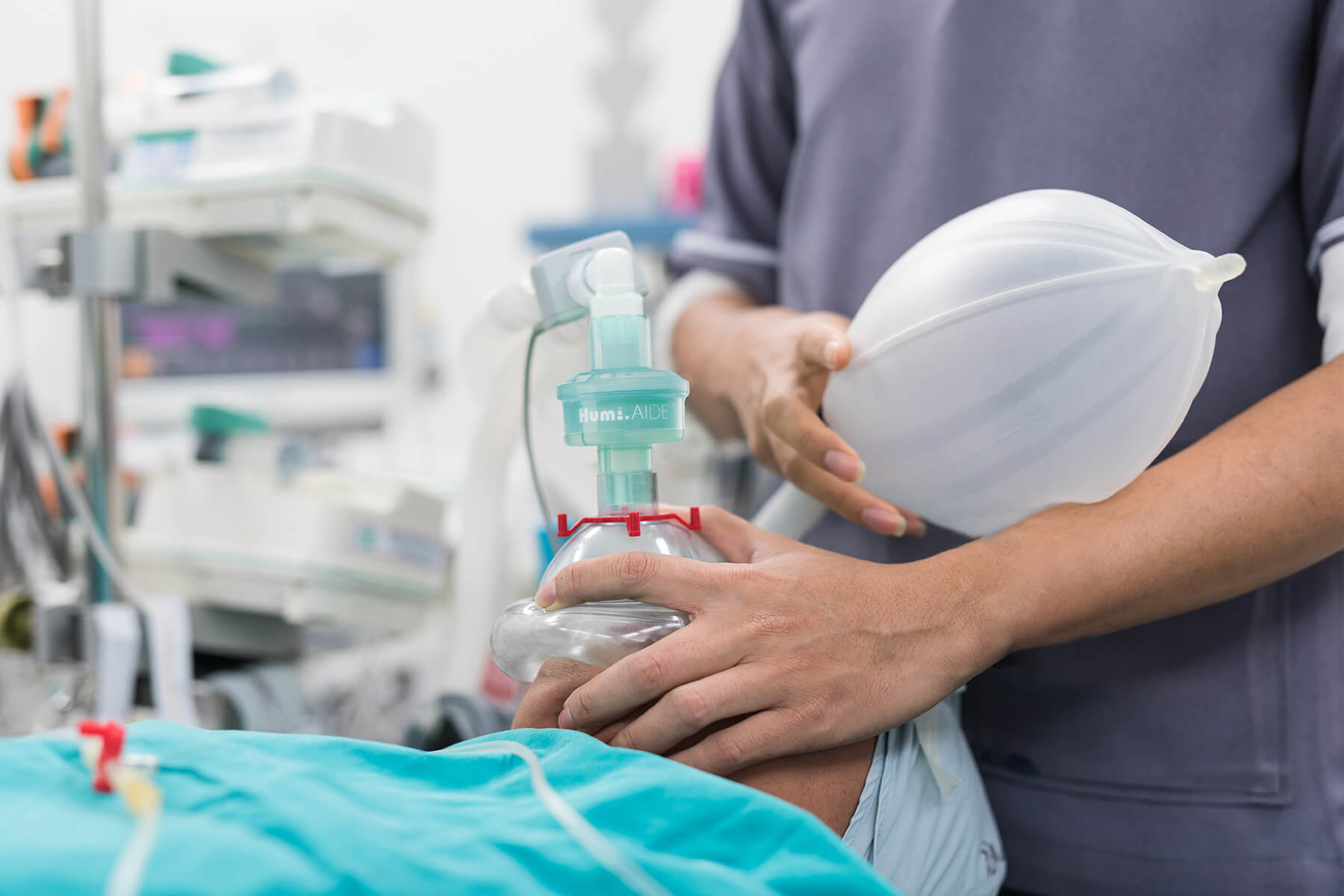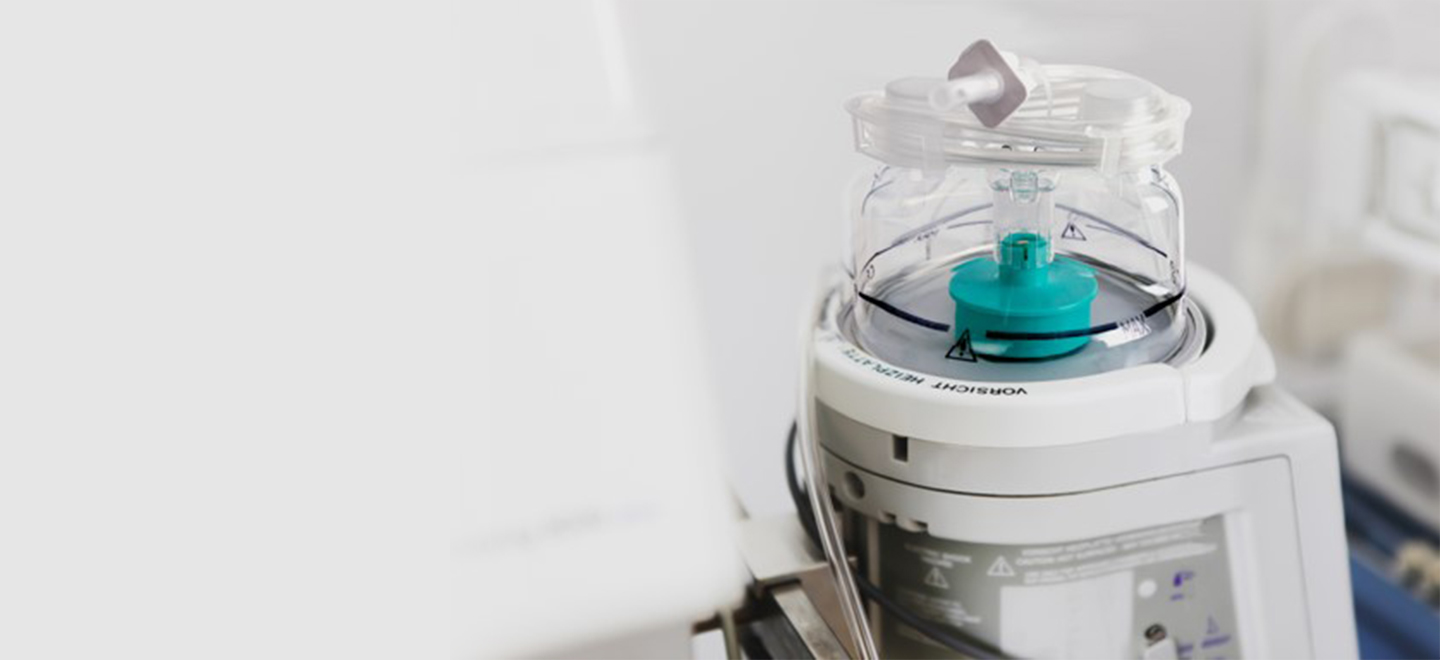Under normal circumstances, when the human body inhales air, the nasal mucosa heats and humidifies the air to ensure sufficient temperature and humidity in the respiratory tract, keeping the lung temperature at 37°C, relative humidity at 100% and absolute humidity at 44mgH2O/L.
However, when the endotracheal tube is inserted and the breathing line is used, the dry and cold gas output by the ventilator cannot be heated and humidified by the patient's own airway mucosa. In this case, moist gas should be used to prevent airway ciliary damage and decline of lung function.
Two main types of humidification system: active and passive:
Active humidification system:
It is connected to the suction end of the breathing pipe near the ventilator, and the target temperature is set by the heating humidifier to atomize the distilled water in the heating tank and send it to the breathing pipe.
-
Heated humidifiers
There are two main types, one can set a specific temperature; the other is to set the temperature range, and both functions are the same, convenient for medical staff to monitor the patient's condition. Most heating humidifiers can be connected to a temperature sensing line to detect the temperature of the respiratory line and adjust the heating degree immediately to ensure patient safety. -
Heated humidification tank (Humidification Chamber)
Add distilled water to the heated humidifier tank and place it on the heated humidifier to provide an active moisture treatment. In addition to the difference between disposable and repetitive, heating and humidifying tank is also divided into manual water supply type and automatic water supply type. - Manual water supply type: medical staff need to regularly check and supplement the water in the heating and humidification tank. The disadvantage is that the breathing line needs to be separated temporarily, which may cause temporary instability of the patient's blood oxygen saturation concentration. Too little water may affect patient safety.
- Automatic water refill type: after the humidification tank is connected to the water bag, the water will be automatically added to the safe range, reducing the burden of medical staff and the risk of cross infection, greatly increasing the safety of patients. This device is especially needed for unstable newborns and patients.

Passive humidification system:
The humidity and heat exchanger (HME), also known as the artificial nose, is placed between the Y-joint of the tube and the endotracheal tube. As the name suggests, the artificial nose collects the moisture and temperature of the patient's exhaled air, allowing the next breath to inhale the hot and humid air through the artificial nose. Unlike active humidification therapy, the artificial nose can be used without electricity, reducing clinical costs and making it suitable for patients who need humidification therapy temporarily.
If there are contraindications, such as large and sticky sputum, hypothermia, too large or too small moisture volume, it should be carefully evaluated before use. Each artificial nose should be discarded and replaced after 96 hours.
In addition to patients using ventilators, dry air during oxygen therapy may also cause nasal and mouth discomfort, such as dry nasal cavity, nasal congestion, nosebleeds, sore throat, hoarseness and other symptoms, which can be relieved with a damp bottle.
There are two types of active moisture therapy devices commonly used in oxygen therapy:
-
Bubble humidifier
It is most commonly used to relieve the discomfort of nasal dryness when oxygen flow exceeds 4 liters/min. The tube inside the damp bottle has a Diffuser at the bottom, which aims to create smaller bubbles and increase the area of contact between gas and water, thereby increasing the relative humidity. Most of the bubble type moisture bottles have high pressure release valves to avoid excessive device pressure affecting patient safety. -
Large Volume Nebulizer
Large volume moisture bottle is suitable for fog mask, air cutting mask, etc., with oxygen concentration adjustment knob, using the principle of air entrainment to provide different oxygen concentration. When using a large volume moist bottle, observe whether there is still fog around the mask at the end of inhalation. If there is no fog, it indicates that the flow is too small. Most spray bottles have openings that can be inserted into a heating rod to produce higher absolute humidity when heated.


